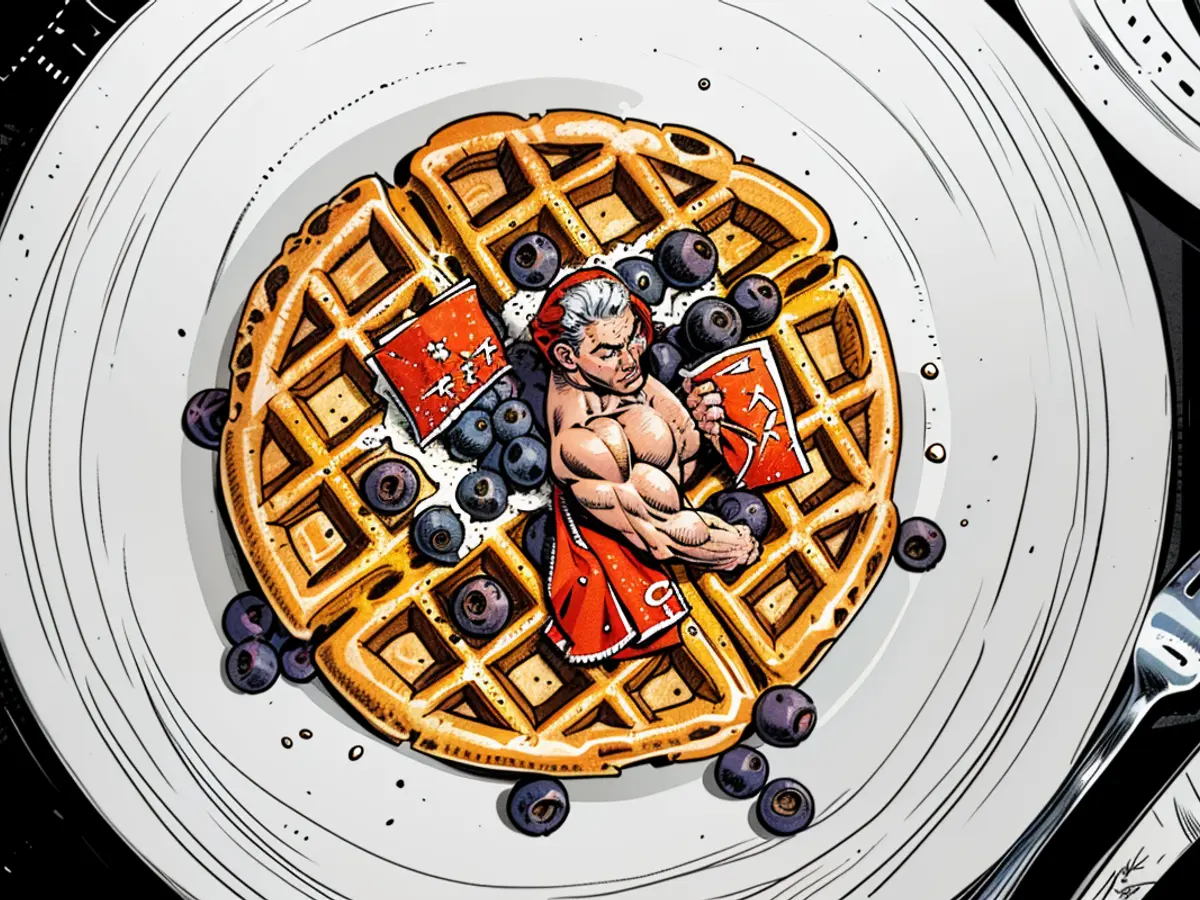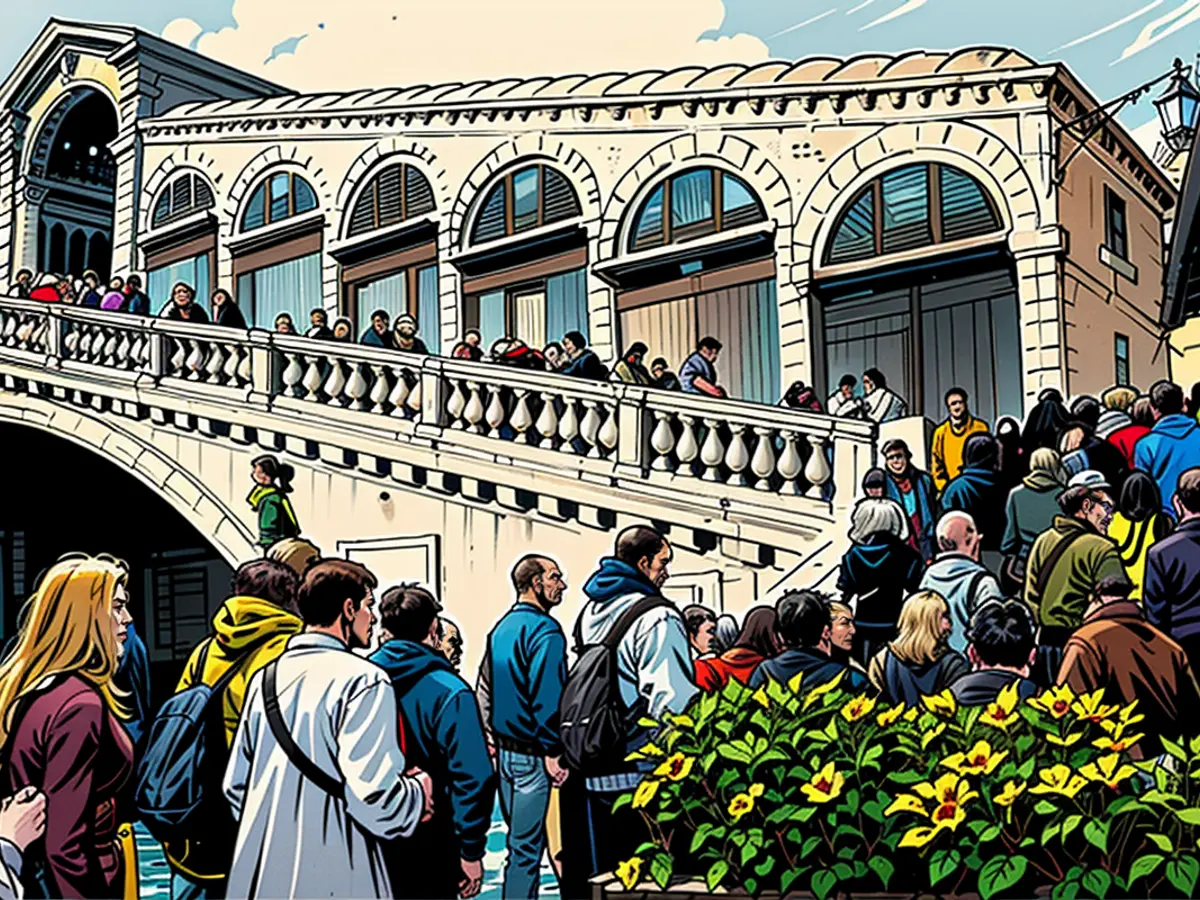The transformation of waffles from a cherished Ancient Roman specialty into a globally beloved snack
Frequently smothered in honey, cream, syrup, or jam, they're perfect for breakfast or as a midday snack, even eaten on the go.
Notably favored in northwestern European countries and the US, as well as Asia, they can be crunchy, sweet, or salty, with either shallow or deep grooves.
Belgium, where they're locally known as gaufres, offers a vast array of waffle variations.
Historical background
Ever wondered about their origins? Scholars assert that this delightful treat has roots dating back thousands of years.
Despite their history tracing back to Ancient Greece, Giorgio Franchetti, author of the book “Dining With The Ancient Romans,” posits that waffles originated from a famous Ancient Roman delicacy.
“They are quite possibly descendants of the widely-adored ‘crustulum’ (plural: crustula),” Franchetti, an ancient Rome culinary historian, tells CNN.
“The term, derived from Latin, suggests that these biscuits were crispy with a crumbly texture that dissolved in your mouth.”
Regrettably, no historical documents have been found detailing the shape of crustula, but Franchetti hypothesizes they were likely flat, made with the same ingredients as waffles, and cooked between two heated irons.
The crustula preparation process is believed to closely resemble today's waffle making, although it's unclear if crustula originally featured the iconic grooves.
As per Franchetti's research, crustula might have been a sugar-infused evolution of panis obelius, a distinctive ancient Greek bread with olives or fresh figs that was cooked between two irons and consumed at Dionysian rituals, which typically involved drinking, dancing, and sacrificial rites.
“These simple biscuits were made from flour, honey, and lard. Today, waffles are made with butter, but as Roman philosopher Pliny the Elder notes, the affluent aristocrats distinguished themselves from the common folks by using butter in their waffles,” he explains.
Following textual discoveries about crustula by Pliny the Elder and Roman lyric poet Horace, Franchetti collaborated with archaeological cook Cristina Conte to revive crustulas.
Ancient Romans had a keen love for cheese, but preferred avoiding butter, which was primarily used as a beauty product and soap, according to Franchetti.
Instead, they prepared their crustula with lard or animal fat.
Crafted perpetually during Roman religious ceremonies, the crustula were sold by street vendors nicknamed “crustulari,” who could be found near ancient Roman temples and places of worship.
Franchetti details that in time, these praised sweets became rewards given to the brightest students by their teachers serving in wealthy families.
In Horace's Satires poems, teachers usually distributed crustula “to entice children to memorize the alphabet.”
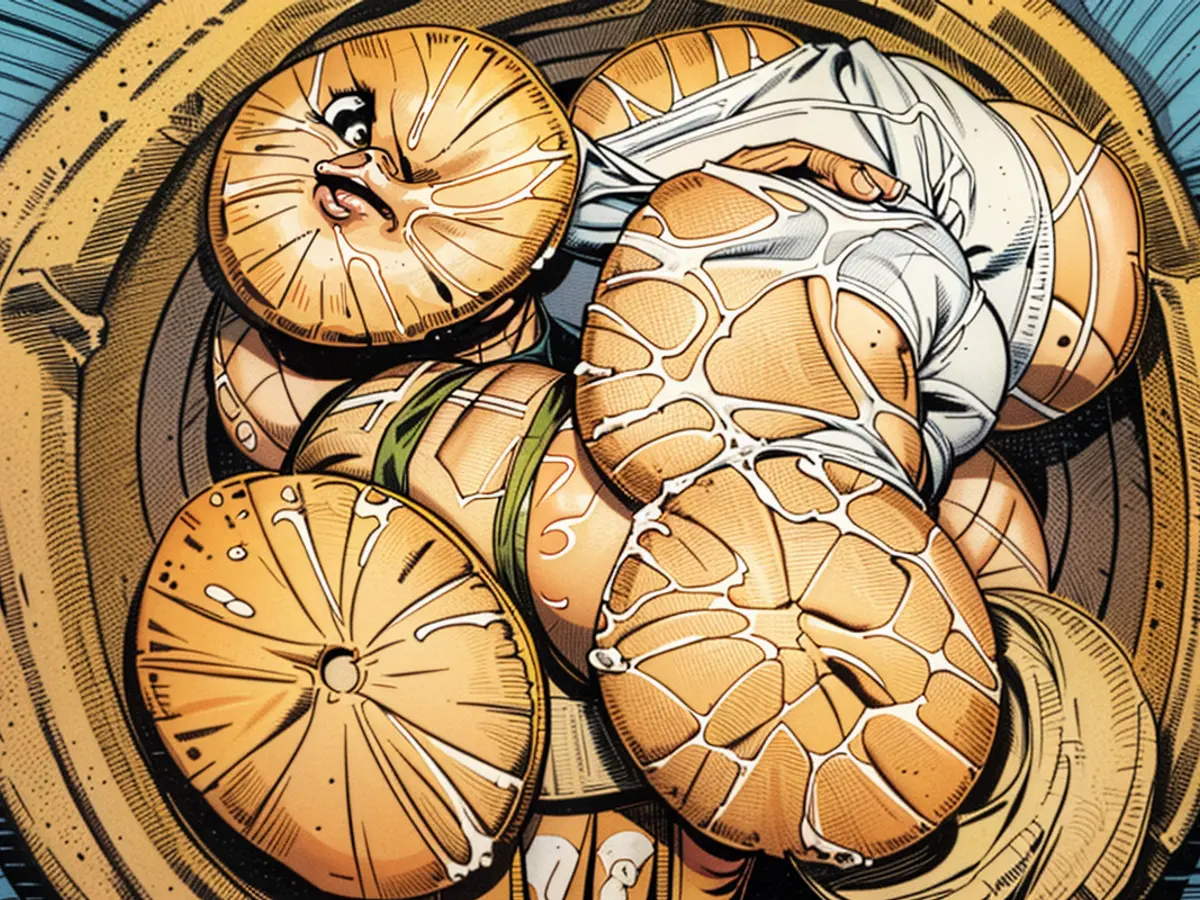
Gradually, these humble yet delightful snacks gained prominence at banquet ceremonies' dessert courses and were served at meal's end.
Sweet transformation
So how did these simple delights progress into waffles as we recognize today?
Franchetti suspects that the crustula cooking method refined during the Middle Ages, potentially marking the emergence of the first grooves, which resembled modern waffles.
Ferratelle, a timeless biscuit that remains popular in various Italian regions, is thought to be the intermediary between Roman crustulas and contemporary waffles.
“Locals in Molise and Abruzzo are introduced to ferratelle, which are consumed year-round and come in multiple sizes and shapes,” says Franchetti.
The name "ferratelle" stems from the metal press or iron, as "ferri" in Italian refers to the tool still utilized to prepare these biscuits in certain areas.
Ferratelle, also known as pizzelle, exhibit similar minute square grooves found on waffles, while the essential recipe and ingredients were likely identical to those used for crustula, according to Franchetti.
Originally, ferratelle were homemade festivities, especially renowned during Christmas and carnival seasons, where households employed irons engraved with their family crests or emblems to stamp their ferratelle.
“The Romans passed down these divine biscuits to us. We've been savoring them since the beginning of time,” states Maria Teresa Spagnoli from L'Aquila pastry shop Dolci Aveja.
During the 1700s, ferratelle irons inscribed with family initials were given as wedding presents to the bride, becoming part of the dowry.
“Today, we still enjoy them at breakfast, as an after-dinner treat with a digestive liquor, or during road trips,” concludes Spagnoli.
Although created inside irons, the Abruzzo ferratelle incorporates eggs, olive oil, milk, vanilla, and grated lemon peel.
These ferratelle in L'Aquila come in various sizes, including diamonds, stars, and hearts.
Alongside the original ferratelle recipe, Dolci Aveja, the leading ferratelle manufacturer in L’Aquila, produces versions featuring cereals and a salty one with rosemary, which complements prosecco as an aperitif.
Making ferratelle remains a significant ritual for those involved in its production.
As per our custom, to produce flawless, authentic ferratelle, you must utter a Hail Mary during the initial cooking stage, followed by a Lord's Prayer for the opposite side, claims Spagnoli.
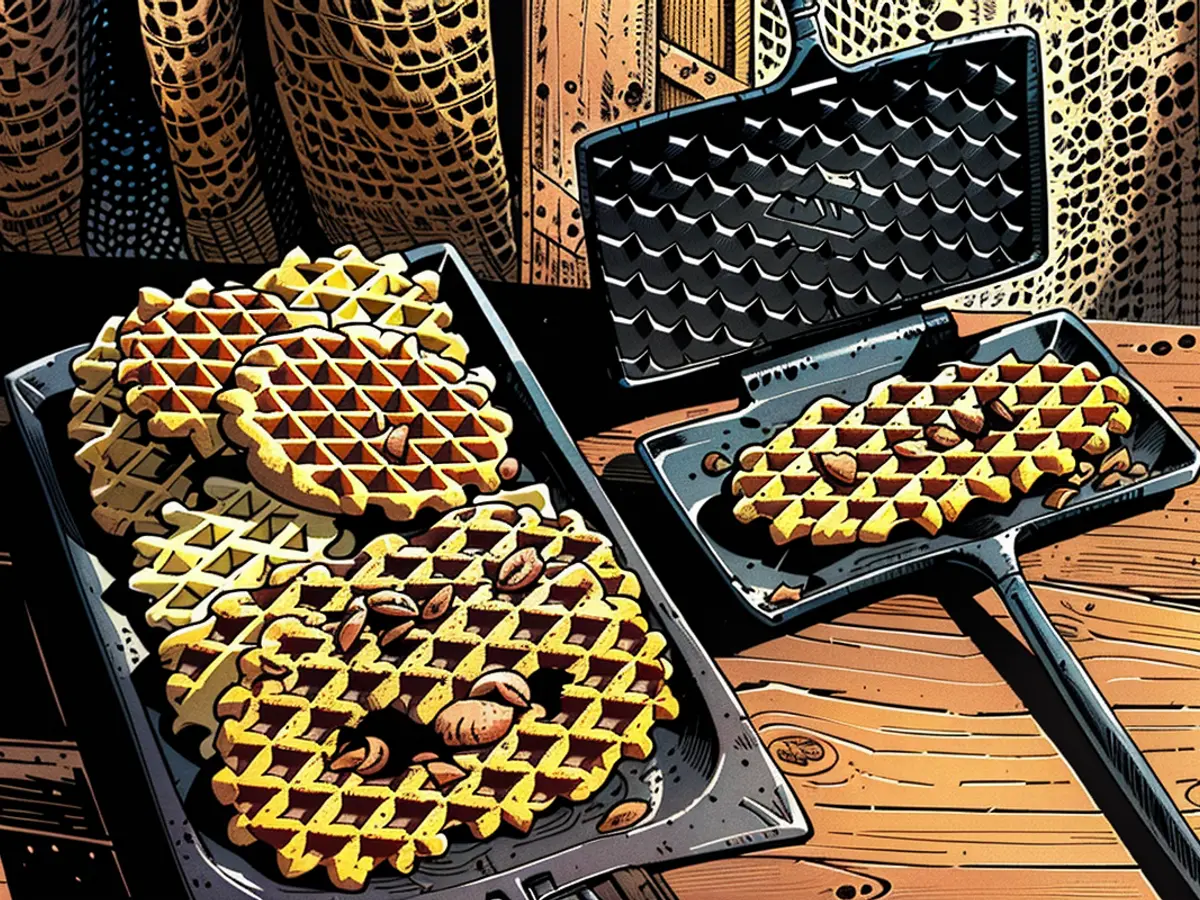
To expedite the cooking process, locals in Abruzzo employ electric irons today.
Using this method, you no longer have to flip the ferratelle during the baking period, as both sides cook concurrently.
In Vasto, a coastal town in Abruzzo, ferratelle are topped with dark chocolate and are identified as “catarrette.”
Residents value the antique irons utilized by their forefathers and etched with their family emblems.
Historian Bonacci from Vasto recalls how his grandmother would prepare ferratelle on Sundays or special occasions, and the family would savor them throughout the week.
“It was a daily indulgence. Sadly, our family has misplaced the old irons, and locating a blacksmith who creates them now is challenging, as there aren't many left,” laments Bonacci.
In adjacent Italian regions, including Latium, there exist ferratelle variants with distinct titles.
Waffle-like cookies can be discovered in Liguria, whereas in Piedmont, they're referred to as gofri and present a deep, rough honeycomb pattern, resembling Belgian gaufres.
However, how and why did these “Italian waffles” migrate to northern Europe and the United States remains a mystery.
“The Romans, alongside their traditions, spread their food offerings throughout the empire. Crustula had numerous legs and eventually made its way to France, Benelux, and England,” suggests Franchetti.
Upon the collapse of the Roman Empire, crustula had been assimilated into the local cuisine of these regions.
A subsequent evolution likely transpired during the Middle Ages, as Italian honeycomb ferratelle were exported to northern Europe along European trade routes.
Eventually, the jump to the New World materialized in the early 1600s with the initial Dutch settlers arriving in New York City.
“That's when crustula-ferratelle morphed into waffles and gained popularity in America,” remarks Franchetti.
Today, waffles can be found across the globe.
In the United States, August 24, commemorating the day when Dutch-American Cornelius Swarthout was granted the first waffle iron patent in the country, is celebrated as National Waffle Day.
The Romans, known for their love of biscuits, introduced a simple delicacy called crustula that was made with flour, honey, and lard. These biscuits, which could be found sold by street vendors nicknamed "crustulari," were even used as rewards by teachers.
As the cooking method for crustula refined during the Middle Ages, the first grooves that resembled modern waffles emerged. This evolution led to the creation of ferratelle, an Italian biscuit with square grooves similar to waffles, which were popular during festivals and special occasions.
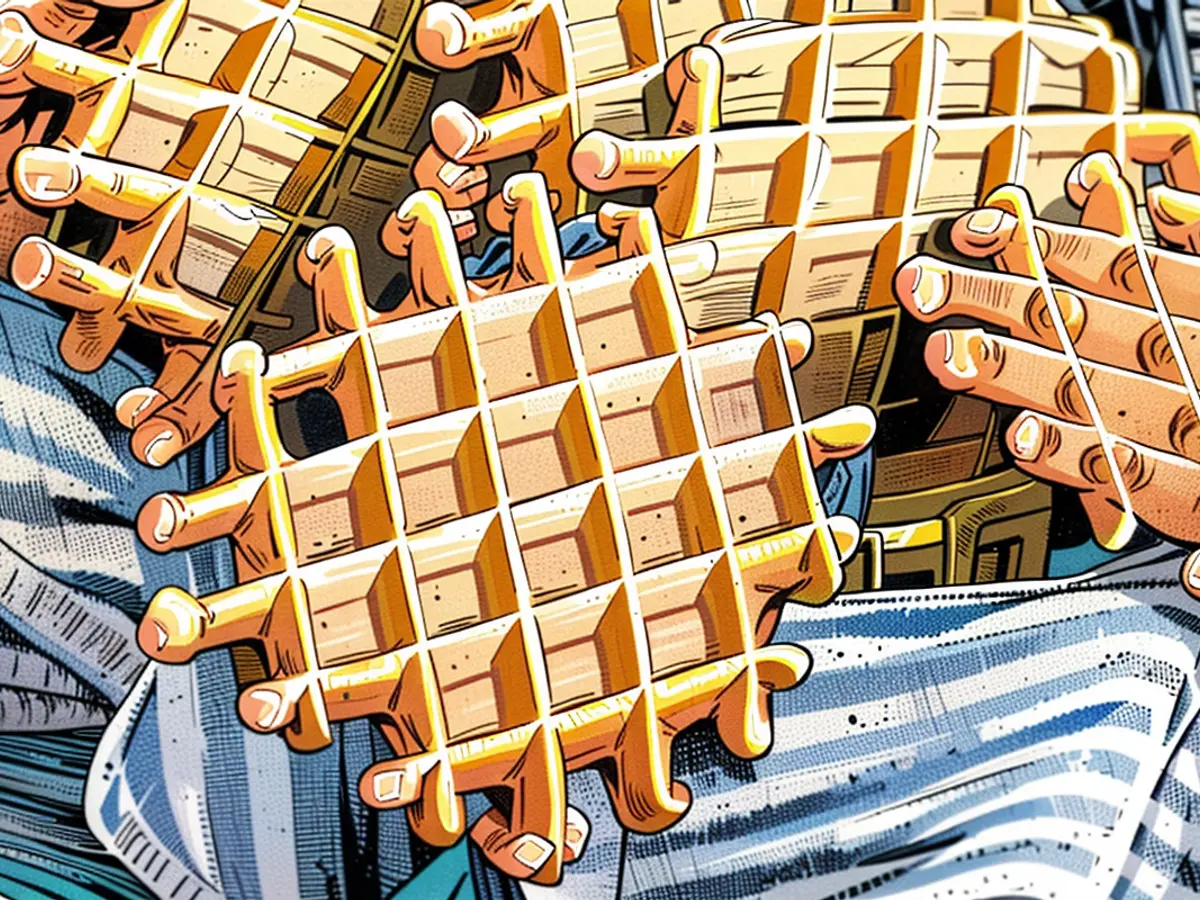
Read also:
- Fear of escalation in the Middle East: US Secretary of State Blinken travels to the region again
- Government circles: US Secretary of State Blinken to travel to Middle East again
- Bridging days 2024: How you can double your vacation this year
- Germany has wanderlust: how tour operators and airlines are looking ahead to the next travel year
